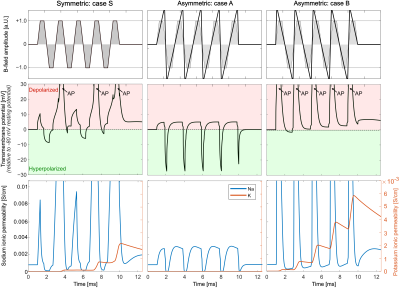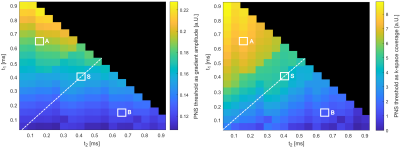Natalie G Ferris1,2, Mathias Davids3,4,5, Valerie Klein3,5, Bastien Guérin3,4, and Lawrence L Wald3,4
1Harvard Graduate Program in Biophysics, Harvard University, Cambridge, MA, United States, 2Harvard-MIT Division of Health Sciences and Technology, MIT, Cambridge, MA, United States, 3A. A. Martinos Center for Biomedical Imaging, Department of Radiology, Massachusetts General Hospital, Charlestown, MA, United States, 4Harvard Medical School, Boston, MA, United States, 5Computer Assisted Clinical Medicine, Heidelberg University, Heidelberg, Germany
1Harvard Graduate Program in Biophysics, Harvard University, Cambridge, MA, United States, 2Harvard-MIT Division of Health Sciences and Technology, MIT, Cambridge, MA, United States, 3A. A. Martinos Center for Biomedical Imaging, Department of Radiology, Massachusetts General Hospital, Charlestown, MA, United States, 4Harvard Medical School, Boston, MA, United States, 5Computer Assisted Clinical Medicine, Heidelberg University, Heidelberg, Germany
We explore the impact of asymmetric trapezoidal readout waveforms with different ramp rates on the response of nerve membranes to reduce peripheral nerve stimulation.

Figure 3: Nerve membrane responses in terms of transmembrane potential difference (2nd row) and sodium/potassium permeability (3rd row) for a symmetric and two asymmetric waveforms. All waveforms achieve the same k-space coverage. The symmetric waveform causes three APs. Using an asymmetric waveform (case A) with longer rise time t1 (up-ramp) and shorter rise time t2 (down-ramp) reduces the nerve’s depolarization and increases it’s hyperpolarization, thus suppressing AP formation. The asymmetric waveform case B has the opposite effect, inducing even more APs.

Figure 5: PNS thresholds given as gradient amplitude (left) and corresponding k-space coverage (right) for the parameter space spanned by the independent rise times t1 (y-axis) and t2 (x-axis). Each square corresponds to a T = 1 ms period waveform. Waveforms along the diagonal (white-dashed line) correspond to symmetric waveforms, while all other waveforms are asymmetric. The asymmetric waveform (A) achieves a 38% increase of PNS threshold in terms of k-space coverage, compared to the symmetric waveform S. The threshold of the asymmetric waveform B is 41% lower than that of waveform S.